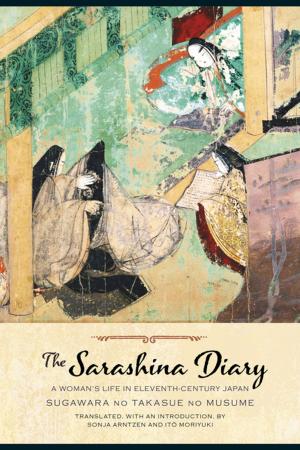Yoshimasa and the Silver Pavilion
The Creation of the Soul of Japan
Nonfiction, History, Asian, Japan, World History| Author: | Donald Keene | ISBN: | 9780231503860 |
| Publisher: | Columbia University Press | Publication: | November 5, 2003 |
| Imprint: | Columbia University Press | Language: | English |
| Author: | Donald Keene |
| ISBN: | 9780231503860 |
| Publisher: | Columbia University Press |
| Publication: | November 5, 2003 |
| Imprint: | Columbia University Press |
| Language: | English |
Yoshimasa may have been the worst shogun ever to rule Japan. He was a failure as a soldier, incompetent at dealing with state business, and dominated by his wife. But his influence on the cultural life of Japan was unparalleled. According to Donald Keene, Yoshimasa was the only shogun to leave a lasting heritage for the entire Japanese people.
Today Yoshimasa is remembered primarily as the builder of the Temple of the Silver Pavilion and as the ruler at the time of the Onin War (1467–1477), after which the authority of the shogun all but disappeared. Unable to control the daimyos—provincial military governors—he abandoned politics and devoted himself to the quest for beauty. It was then, after Yoshimasa resigned as shogun and made his home in the mountain retreat now known as the Silver Pavilion, that his aesthetic taste came to define that of the Japanese: the no theater flourished, Japanese gardens were developed, and the tea ceremony had its origins in a small room at the Silver Pavilion. Flower arrangement, ink painting, and shoin-zukuri architecture began or became of major importance under Yoshimasa. Poets introduced their often barely literate warlord-hosts to the literary masterpieces of the past and taught them how to compose poetry. Even the most barbarous warlord came to want the trappings of culture that would enable him to feel like a civilized man.
Yoshimasa and the Silver Pavilion gives this long-neglected but critical period in Japanese history the thorough treatment it deserves.
Yoshimasa may have been the worst shogun ever to rule Japan. He was a failure as a soldier, incompetent at dealing with state business, and dominated by his wife. But his influence on the cultural life of Japan was unparalleled. According to Donald Keene, Yoshimasa was the only shogun to leave a lasting heritage for the entire Japanese people.
Today Yoshimasa is remembered primarily as the builder of the Temple of the Silver Pavilion and as the ruler at the time of the Onin War (1467–1477), after which the authority of the shogun all but disappeared. Unable to control the daimyos—provincial military governors—he abandoned politics and devoted himself to the quest for beauty. It was then, after Yoshimasa resigned as shogun and made his home in the mountain retreat now known as the Silver Pavilion, that his aesthetic taste came to define that of the Japanese: the no theater flourished, Japanese gardens were developed, and the tea ceremony had its origins in a small room at the Silver Pavilion. Flower arrangement, ink painting, and shoin-zukuri architecture began or became of major importance under Yoshimasa. Poets introduced their often barely literate warlord-hosts to the literary masterpieces of the past and taught them how to compose poetry. Even the most barbarous warlord came to want the trappings of culture that would enable him to feel like a civilized man.
Yoshimasa and the Silver Pavilion gives this long-neglected but critical period in Japanese history the thorough treatment it deserves.















